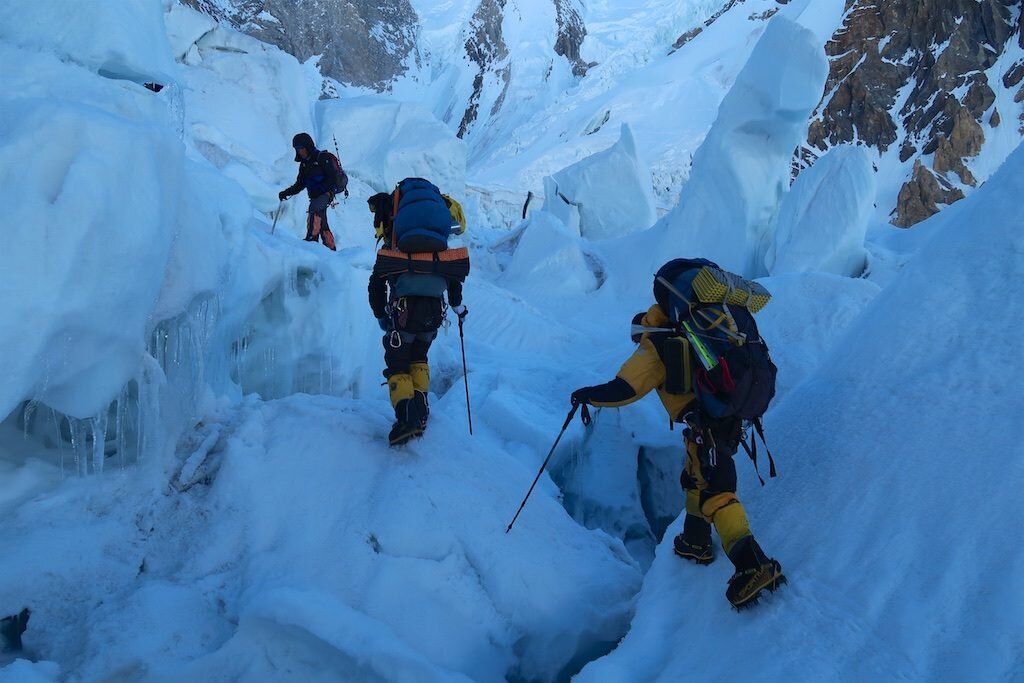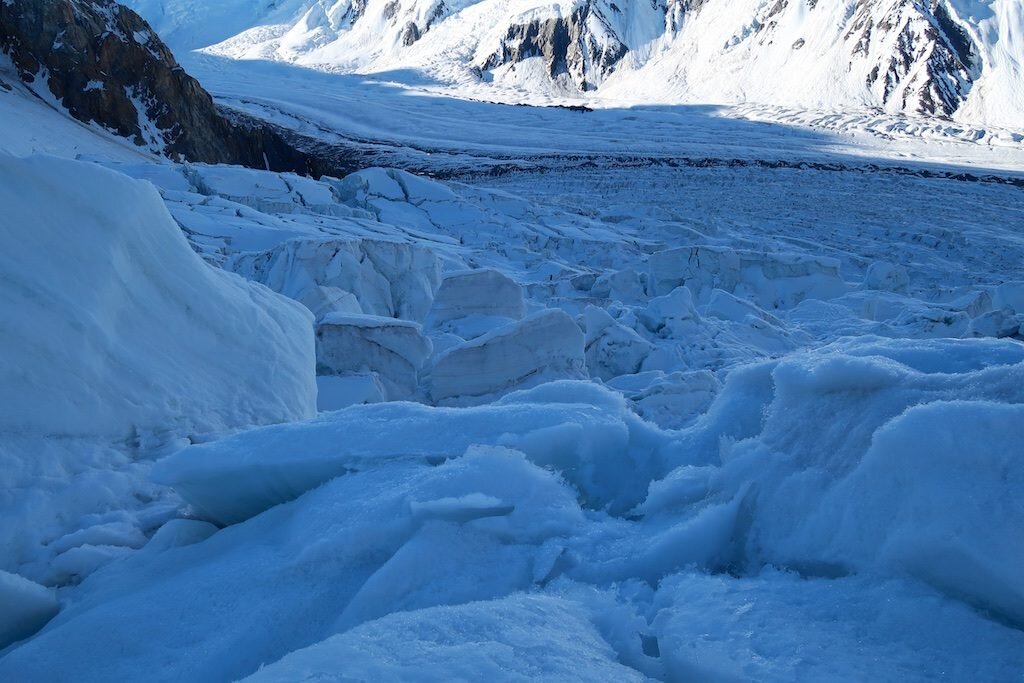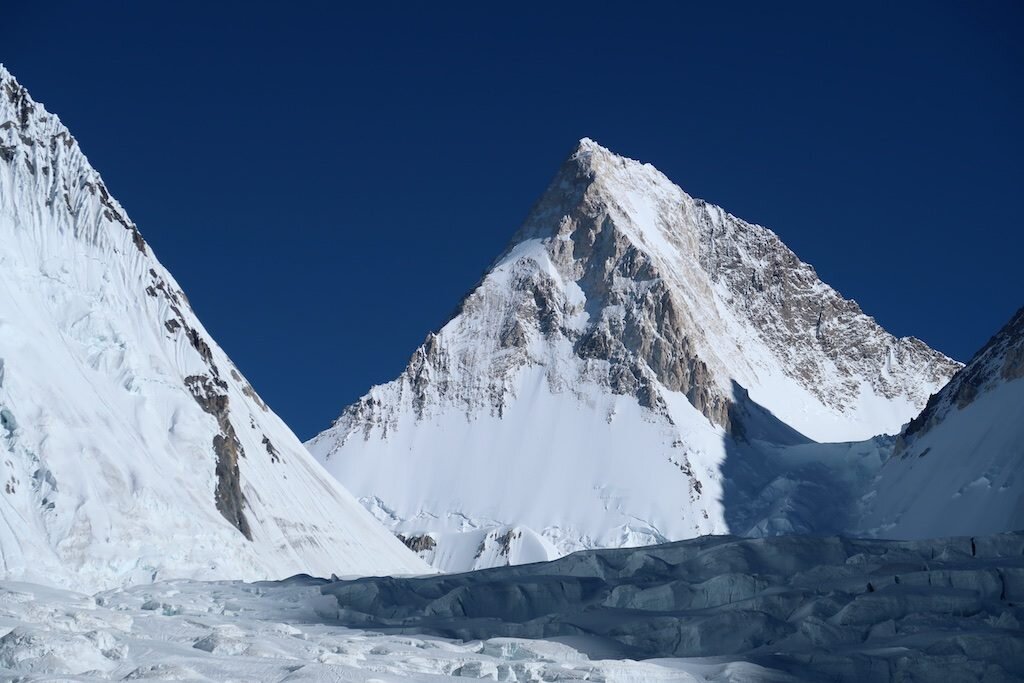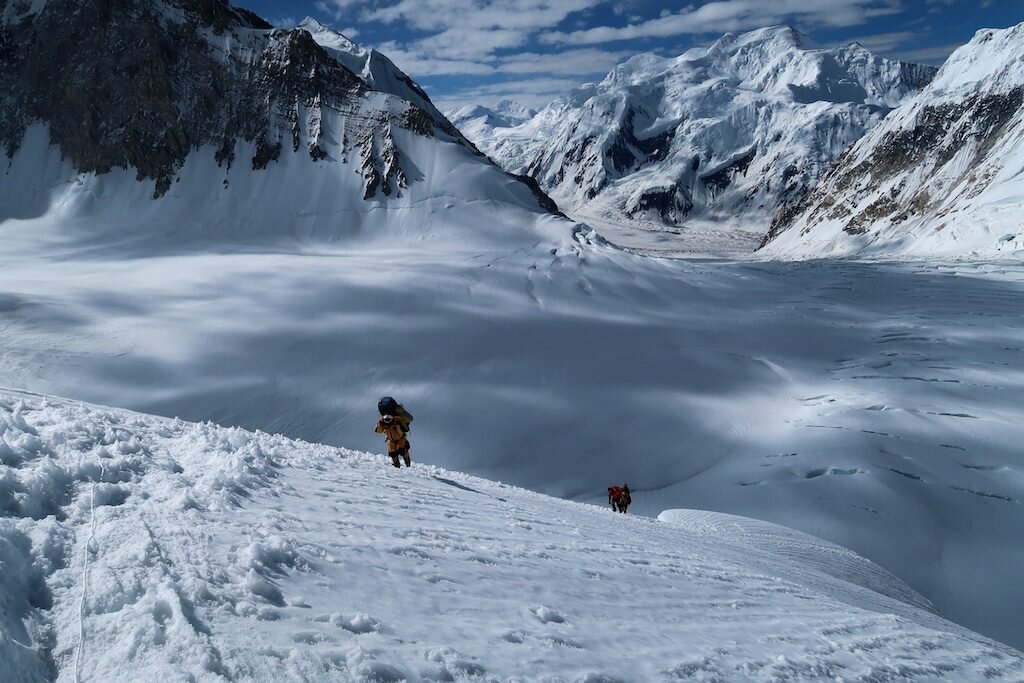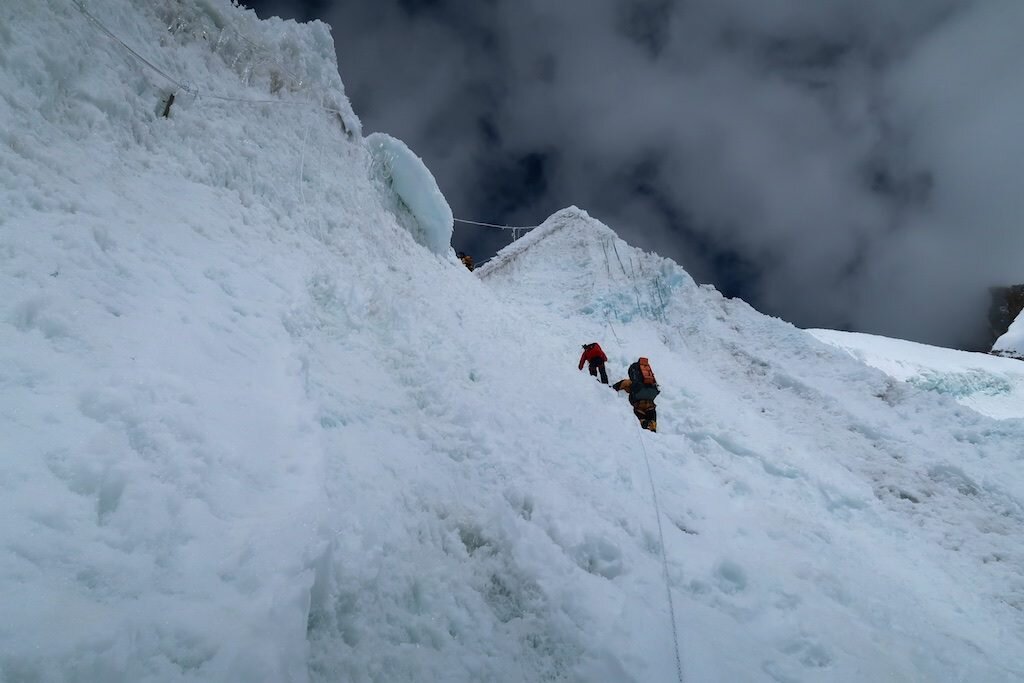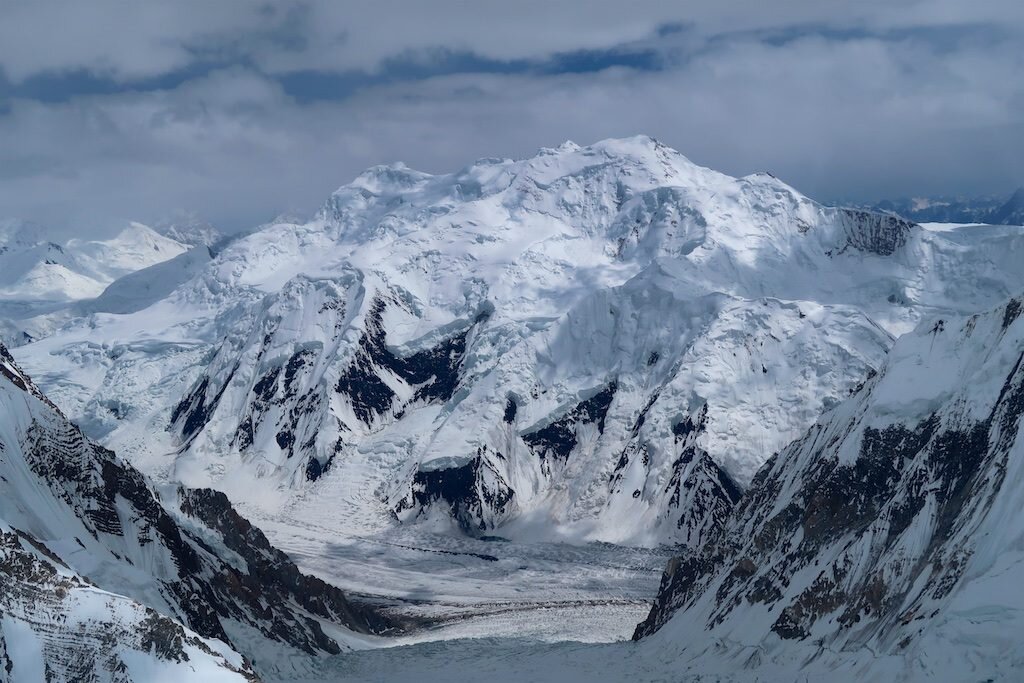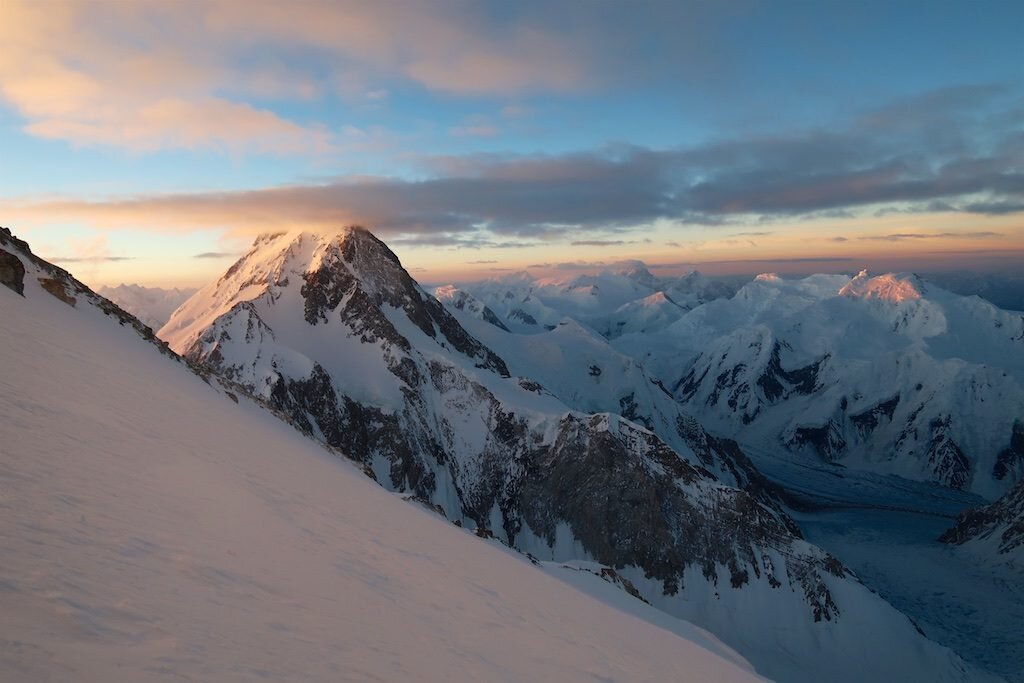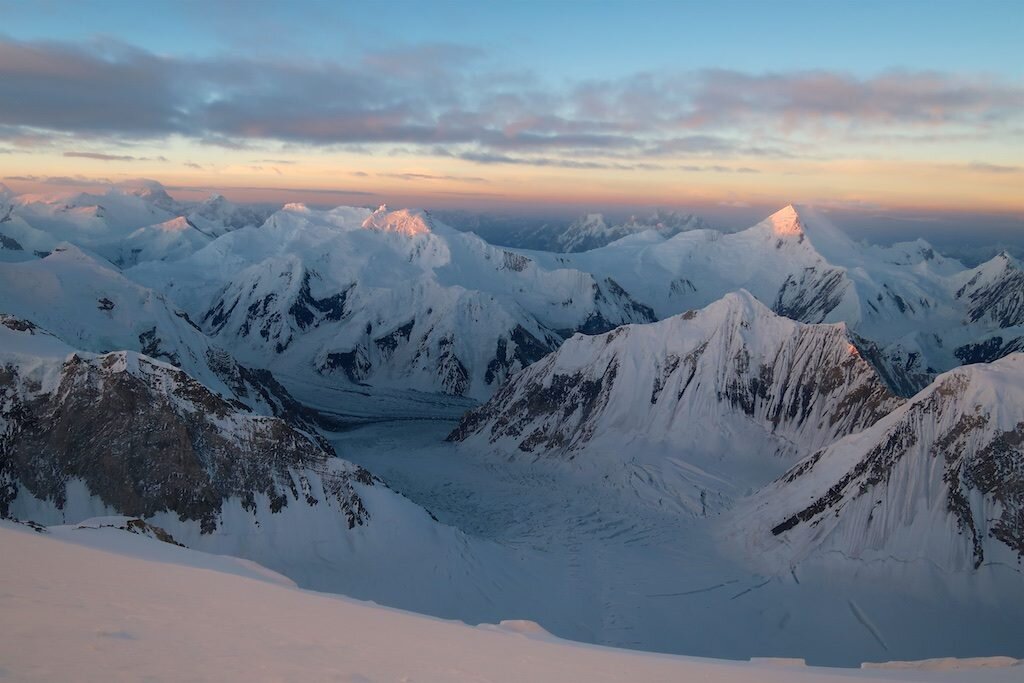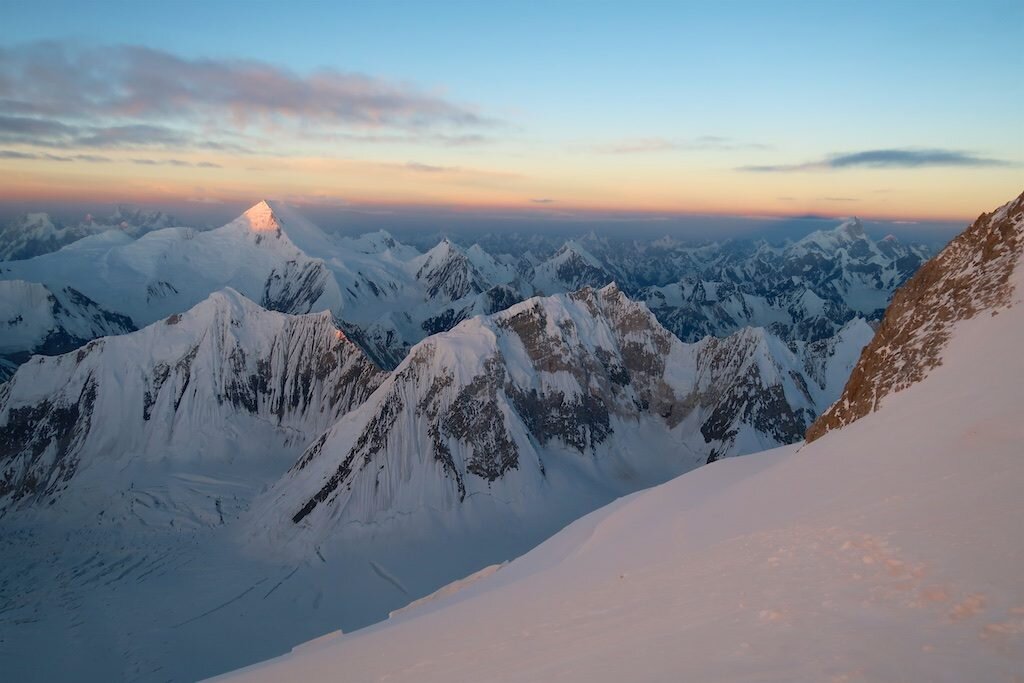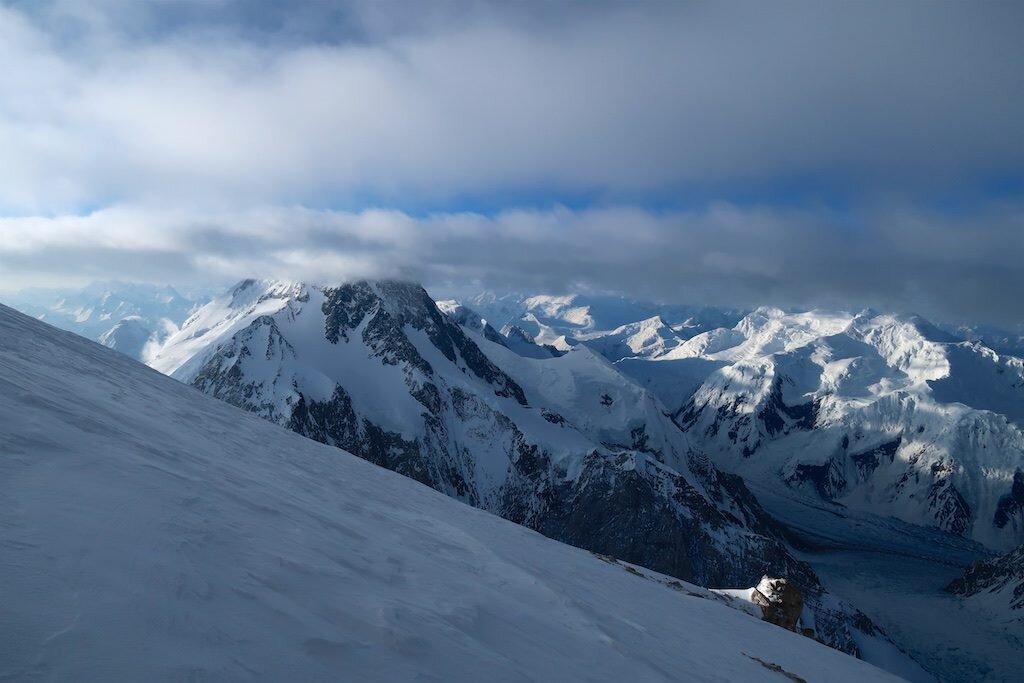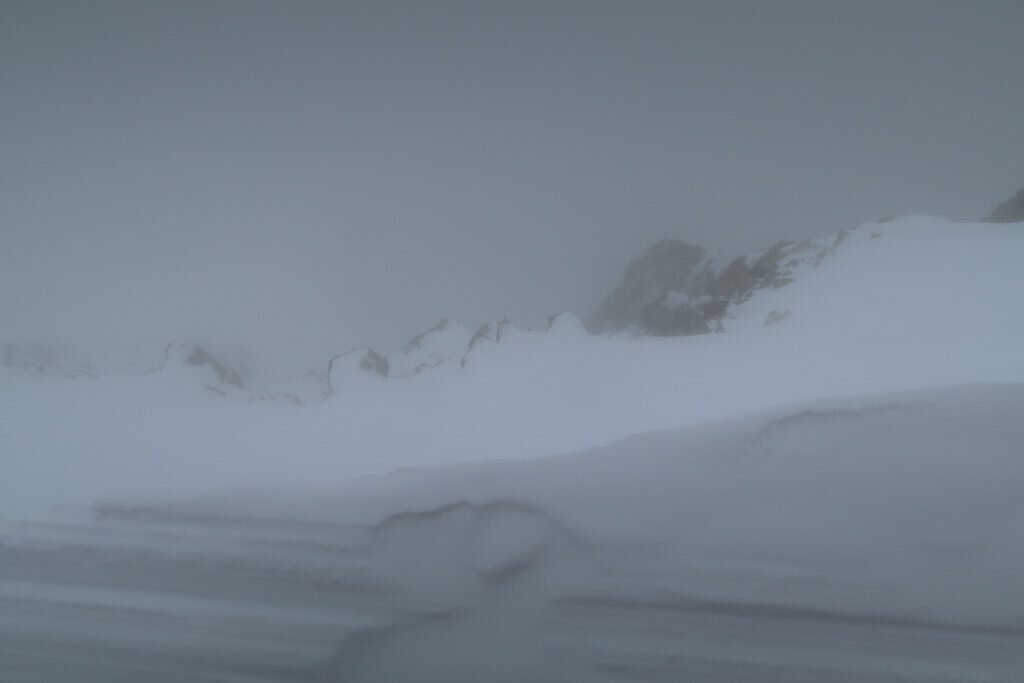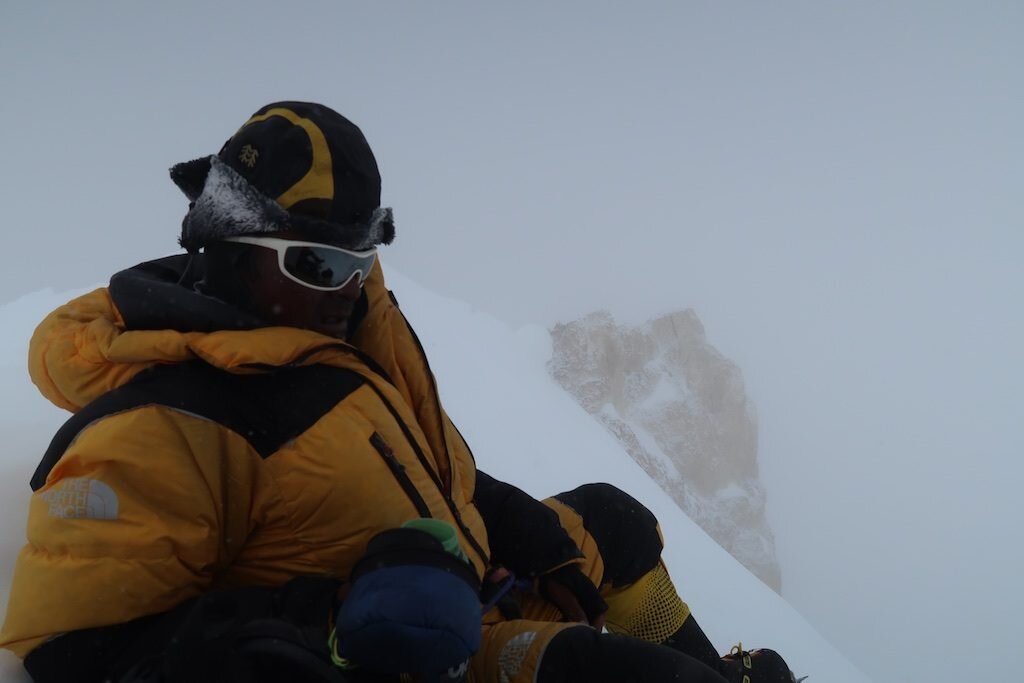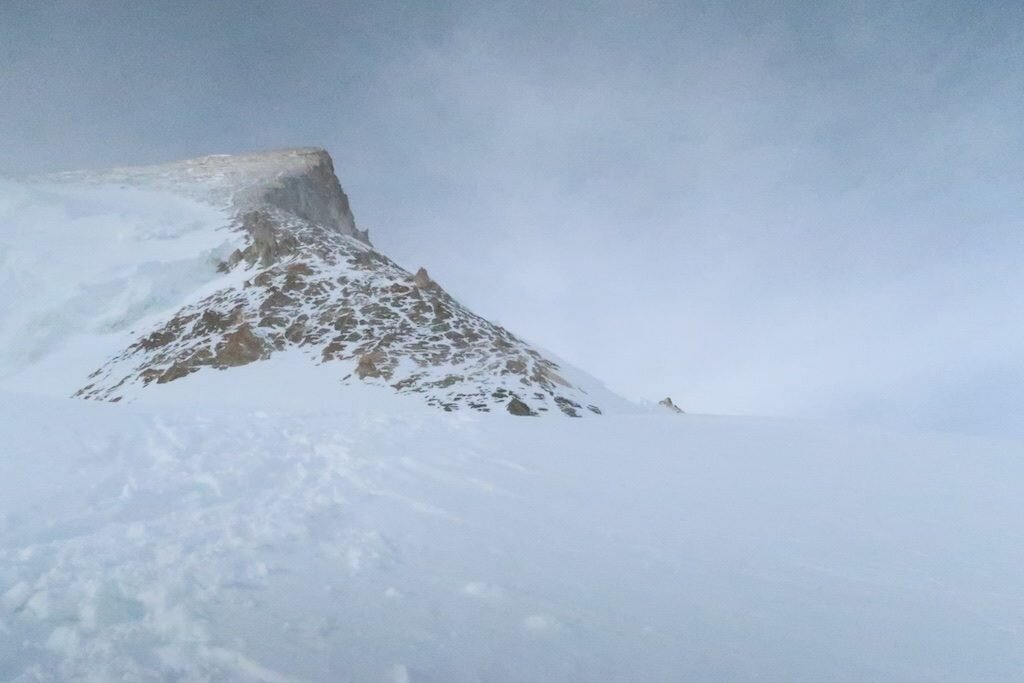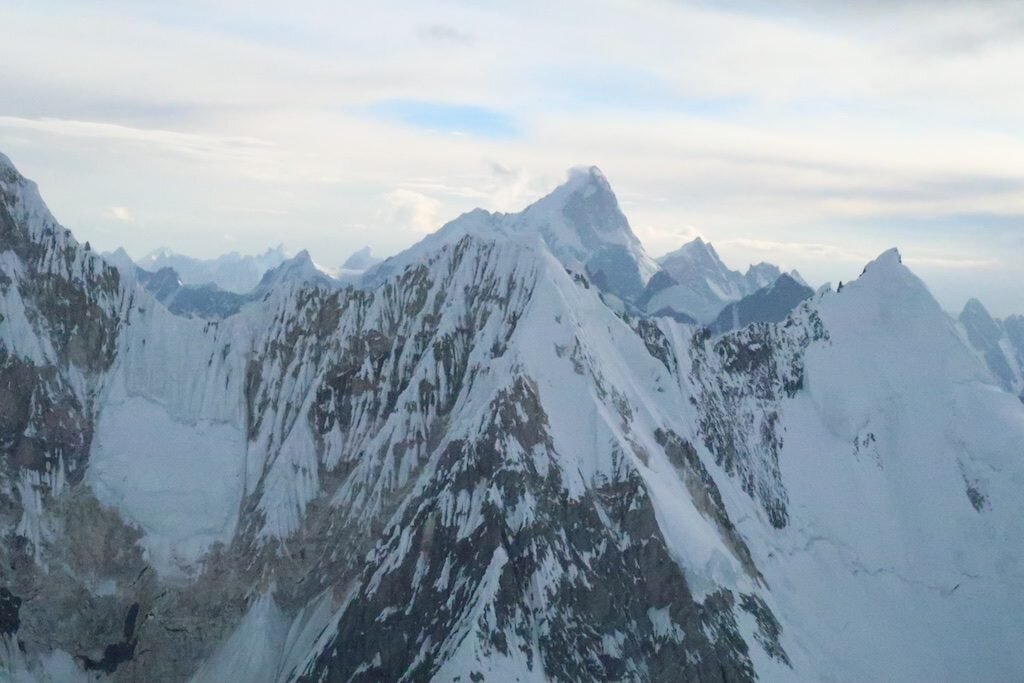Gasherbrum, the real story

I’ve made it all the way back to Islamabad and I fly home tonight. I’m finally ready to share the story of Gasherbrum II, but first, I have a confession to make: I don’t tell the whole truth on this blog. Sometimes sensitive things happen involving other climbers, sometimes I choose to not unnecessarily scare you, and sometimes it’s just my decision to be purposefully vague and call something “challenging.” I debated how much to whitewash my account of G2, but I’m opting to be pretty honest (again, some additional details from this climb just aren’t meant for the internet). As you’ll see, climbing often is less about aerobic ability and has more to do with keeping your head in the game and responding to the curveballs life throws your way. Enough editorializing, here’s what happened on G2, at least what my fuzzy memory can reconstruct from it.
After about 8-9 days rest following Broad Peak, I was ready to move to G2. While I was originally the only one with a permit, a number of teammates fresh off a failed attempt on K2 decided to join. We made the trek from K2 all the way to Gasherbrum base camp in a day. It was a long haul as this is normally a two-day journey.
Sanitation in our Gasherbrum base camp was horrible. Notonly were there feces everywhere, but our kitchen’s soap bottle was sealed andunopened. Not a good sign. And when a teammate went to get boiled water, thekitchen staff added cold water to hot water and started to pour it. Five of uspromptly got sick. We took one rest day and my symptoms worsened. Altitude nevermakes things better. The next morning, as we climbed up through the Gasherbrumicefall, I made numerous pit stops. By the time we reached camp one (our statedgoal was camp two), I prayed that our team would collectively decide to call ita day. Fortunately, they did, and we spent the afternoon getting some much-neededrest. I was pretty beat.
The next day, we needed to go directly to camp three. We were trying to outrun a storm so we didn’t have extra days to play with. The route from camp one to three is the most technical of the route, following the famous Banana Ridge. This consisted of some particularly narrow sections of rotten ice and snow, and traversed some steep ice pillars. Again, I repeatedly needed to stop for urgent bathroom breaks, but now in high-angle situations holding onto the fixed ropes. It was a long, challenging day…any time you’re climbing to 7000 meters with a pack it takes something out of you.
Summit day
High camps are more like stopovers. You don’t really rest orget better there, so you might as well just take a few hours to hydrate,stretch out and prep for the summit push. Before “dinner” I puked. I just triedto rehydrate and relax as much as I could. Soon, we were getting dressed and packing.And finally, at 10:30PM on July 24, nine headlamps ascended into the Karakoramnight under a bright moon. The night started reasonably well. It’s never easymoving upwards over 23,000 ft but I did a great job again with my boots so I hadtoasty warm toes and everything working well upstairs. But my GI system wasstill heavily compromised. About two hours in, on a rocky section, I needed togo to the bathroom. Soon after, I vomited. It was the first time I consideredgoing down. But I didn’t seem to lose too much strength and I kept tellingmyself that if I could get to the start of the traverse (the long, gentle snowsection between the summit rock pyramid) that I could reassess there. I didn’trealize, however, just how long and soul-crushing this loose rock sectionbefore me would take. It was just the right angle and just the right size ofgravel to make cramponing up it hell. Any smaller and the crampons would haveeaten it up no problem, but at this size, every rock was poised to roll andmake you fall down. Excruciating work.
I made it to the start of the traverse, now behind the maingroup, climbing with Pasang and Mingma slightly behind. I didn’t feel badly sothe three of us roped up and began up the long snow slope to the notch at thebase of the summit ridge. As the sun came up, warming us and our spirits, Ibegan to vomit. Every so often, if Pasang pushed the pace slightly past mylimit, I’d double over and hurl. During one of these five sessions, Mingma cameup and put his arm around me. I assumed he’d gently convince me to turn around,but instead, gave a short pep talk. This would be Mingma’s 13th8000er and I knew there was no more motivated person on the mountain.
Despite the delays, we still made good time up the slope,and soon were at the notch. We’d all been praying for a gap in the weather sowe could take one proper sit down break, but when we reached the ridge, thewind was more violent than ever. All I did was apply sunscreen. I cached my smallsummit pack to jettison all possible weight over the last few hundred meters.
As we neared the top of the couloir gaining entrance to thesummit slopes, I began to hallucinate. Blurry rocks in the distance becameanimated, colorful human figures. One, I became convinced, was a dead body. Whilethis sounds alarming, hallucination, I should note, is something I’veexperienced on a number of occasions in the mountains. Even at low altitudes inthe Sierra I’ve been able to reach these altered states simply by climbing 26hours straight. In any case, cognitively I was able to recognize that what Iwas seeing wasn’t real. And on the bright side, at least the vomiting had stopped.I knew I was absolutely on empty with food and water, but I felt stronger and Iknew we were getting close.
We passed the rest of the team on their descent from the summit. All smiles, they assured us that the summit was “less than an hour,” “an hour,” and “more than an hour.” The weather closed in. It was hard to see Pasang in the lead, and Mingma came in and out of view below me. Then Pasang waved and I knew that we were about to reach the summit ridge. As I swung one leg over onto the other side, I realized it was serious. This knife-edge ridge would require all of my attention. The rope ended about 30 feet before the true summit. I unclipped, braced my hands on the firm snow and front-pointed across the precarious final slope. At 10:30AM, after twelve hours of climbing, I could climb no higher. Pasang and I sat in silence on the summit, watching Mingma cover the final slopes. After some rest, summit photos and congratulations, we began to descend. I didn’t even take a sip of water.

I am nothing more than a single, narrow, gasping lung, floating over the mists and summits
Reinhold Messner
Somewhere on the descent, Mingma politely informed me thatTam Ting had already taken my summit bag down to camp three as a favor. Great…nofood, water, mittens, goggles, you get the idea. I put it out of my mind and keptplungestepping down. When we reached the base of the lines, the weather waseven worse. Now things looked like a maze of chutes. Our tracks were covered. Wasit really possible to get lost this high on the mountain? We opted to descend asteep narrow gully (different than the one we climbed) with three or four rappelswhich brought us back to the plateau above the traverse. Then we roped together,and with Pasang’s outstanding routefinding, navigated the entire traverse untilthe clouds parted on the slopes above camp four. Mingma was toast. I feltsecretly happy that I wasn’t the one holding the rope team up as he flopped inthe snow. I ate some snow at our breaks, trying to at least moisten my mouth.We descended the awkward rubble slopes and soon the glorious tents of campthree came into view. The rest of our team was gone, opting to charge on downto camp one, but it was clear that for the three of us, at 18 hours, our daywas over. I had a feast of a dinner: two or three crackers and a cup of tea,and promptly went to sleep.
Then it got hard
We woke up at 3AM to get down before the icefall became awarm, sloppy hell. It took me/us forever to break down camp, pack and get movingbut we were finally descending in earliest light. We were in the clouds, makinga whitish, soft light which blended with the snow to make the world a fuzzy,fluffy ping pong ball. My world was especially fuzzy. At sea level, you’drecognize this right away. But at extreme altitude, when you haven’t reallyeaten or drank in a couple days, and in a moment when you just need to focusand get down, sometimes it’s hard to tell.
I don’t really remember when I realized, but somewherebetween camp two and three, I figured out, well, that I couldn’t see.
Still hallucinating? Check. Crevasses were multicolored dancingfigures. I couldn’t tell if they were right in front of me, or, as was usuallythe case, thousands of feet below me on the glacier.
Seeing double? Check. This took forever to figure out. Howcan you tell when everything’s white? On big mountains there’s usually a mazeof fixed ropes from previous years and one good one from this year. When “armrapelling” (grabbing a bunch of ropes and sliding down), I usually clip a few crappyropes for good measure. Turns out, there weren’t a few ropes. At one anchor, Icould actually see the two ropes merge into one as I was rigging a traditionalrappel on my device and discovered the visual trick.
Blurry vision? Check. This one was by far the scariest. And,full disclosure, the other issues have cleared up but I still have a pretty bigproblem here over a week later. Blurry vision was a big deal because it reallyaffected my ability to see textures and footprints, not to mention the majorstuff you shouldn’t be messing with in the big mountains.
Normally, I’m a big fan of arm rappelling. When I’m feelingconfident, I can face in, face out, quickly pass anchors, pass other climbers.It’s fast and versatile. But I soon realized that I was better off rappellingeverything I could. My vision was fine at close range, so I could reliably rigmy device and then just use good technique to get to the bottom of the rope. Thefirst few raps were textbook, and I was happy I was efficiently getting off abig mountain.
Near the end of one of the raps above camp two, I had asurprise. I’d gotten slightly to the right of the track (again, it wasdifficult to see), planted my left leg and pushed off. My right leg, expectinganother step in soft snow, dropped into oblivion as I went into a crevasse. Mymomentum pivoted me around the rope, so I inverted. I locked the ropeimmediately and kicked my left leg into the snow, flipped right side up,squatted out of the void and continued the rappel. Quite the 6AM wakeup call!

The rest of the technical descent went smoothly. I was surprisinglynot that tired. I waited for Mingma at the base of the lines as I really neededhelp knowing where to go. It was on the flat portion of the glacier that itreally became clear to me that my vision issues were going to become achallenge. The texture of the snow looked like gray volcanic ash or red clay,but the crampon marks were often completely obscured. We soon reached camp one,where Mingma Tenzing, Pasang and Tundu were breaking down the last of camp.Once everyone was packed up, we unceremoniously departed for base camp. Iinsisted that we rope up, citing the fact that I couldn’t see! It was snowing,a good sign I thought, for the condition of the icefall. Boy was I wrong.
The start of the route from camp one to base camp is a “flat”glacier. I remembered it being mostly easy walking with some crevasses alongthe way. Well, maybe, but we were also in a snowstorm so we couldn’t find themain track. Plus it was warm, making things that were normally frozen solidinto invisible death traps. I’d say about half an hour outside of camp thingsgot pretty full on. We had two rope teams: Mingma Tenzing in the front, followedby Pasang and Tundu, and a second rope with me in the front followed by MingmaGyalje. Mingma Tenzing took the lead role like a champ. It’s hard to describejust how serious of a job he had, but we were in a convoluted maze of crevasses.He would routinely hop down on his stomach and belly crawl, probing for holeswith his trekking pole. Once he’d crossed an absolutely insane section, it wasPasang’s turn. Normally, following feels a lot more secure than leading, but inthe case of Pasang, he was carrying what can only be described as a monsterpack. He was punching through absolutely every hole so Mingma Tenzing and Tunduhad to watch him like a hawk. Even I, the fourth to pass through each section,punched through a lot of snow bridges. On one occasion when a one-foot hole becamea five-foot hole when I stepped on it, Mingma asked, “You didn’t see that?” I waslike, “I did see that but it got a lot bigger!” A few times with monstercrevasses, we had to get creative. In one case, we were forced to climb downinto it and up the other side.
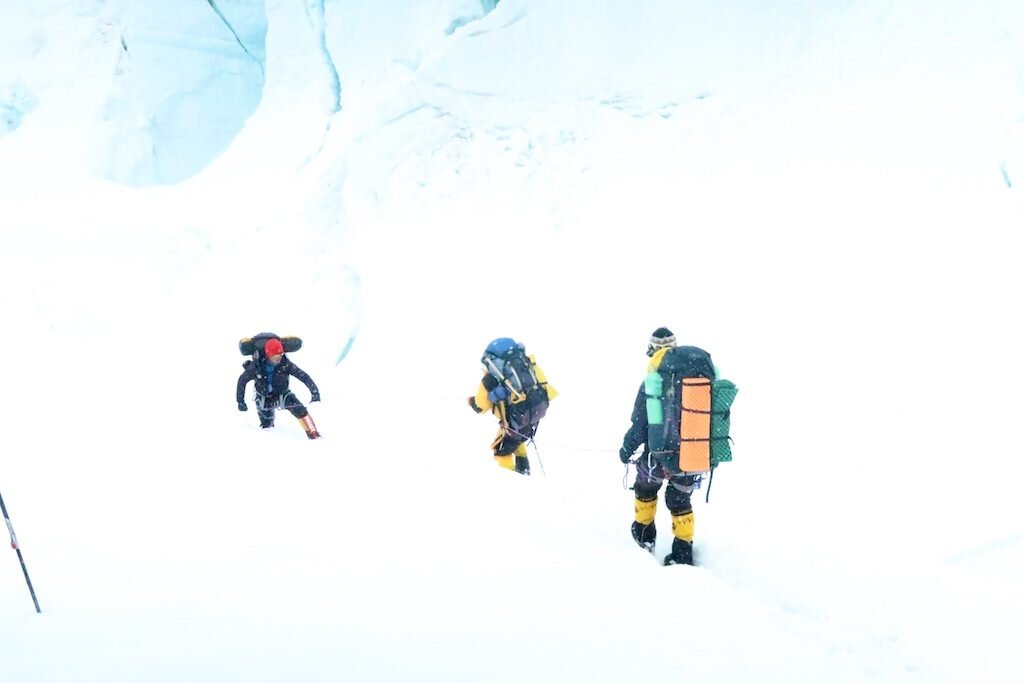
At last we reached the top of the icefall, and at last, Ithought, it would get easy. Solid ice! Oh yeah, I remembered, solid ice surroundedby rotten popcorn suspended above air. Easy to know what to step on if you cansee. The icefall starts with a flatter section and some really athletic jumpsover big crevasses. Fortunately, a couple of these have a fixed line. But therewere some really serious jumps that didn’t. We stayed roped up and the firstteam took off, with Mingma Tenzing again working hard to keep us on route.Things were fine if I could keep in contact with them, but whenever they gotmore than a few meters out front of me, I froze up as I simply couldn’t seewhere to put my feet. Crampon marks on snow in a snowstorm were absolutely impossiblefor me to make out. In one memorable moment, I stood on a pedestal of ice over theblack void of a crevasse. “Where do I go?” I asked Mingma? “It’s an easy jump,”he said. Seriously, where am I jumping, I thought. Below me was a teeteringblock of ice, tilted at about a 75-degree angle. “Where do I land my feet?” Hecame up beside me and pointed down about four feet with his pole. It wasseriously scary. I have to jump across and down the crevasse, stick my cramponsin the sloping ice so I don’t go in the black and I can’t even see what I’mjumping on? I leapt, didn’t exactly stick the landing, but rotated and kickedback into the ice block across the crevasse to arrest my fall. Sick.
The icefall got easier and easier as we descended, but Istill had to stick right behind someone so I wouldn’t lose the way. At 3:15PM,I strode into base camp, shared some congratulations with my teammates and ourcookstaff, and began to repack for the journey home. Mingma had made the callthat we would begin our accelerated trek down the Baltoro early the nextmorning. There would be no rest til Skardu.



